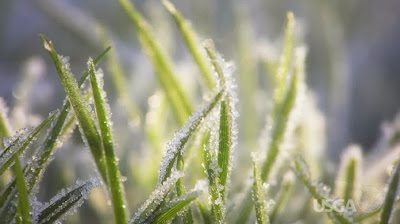Objective:
Students will learn how a water molecule can change from a liquid to water vapor and back to a liquid.
Students will learn how a water molecule moves throughout our planet in the Water Cycle.
Vocabulary:
evaporation
condensation
precipitation
Warm Up:
Wet Paper Towels demonstration
What is the water cycle?
Discuss, draw pictures, and write down ideas
•What are the three parts of the Water Cycle?
•What is evaporation?
•What is condensation?
•What is precipitation?
•Which kinds of precipitation do we get in Los Angeles?
BrainPop.com Video of the Week: Water Cycle
Where is water on our Earth?
 |
| How much of the water can we drink on Earth? |
 |
| How is water used at home? |
|
Can water be in the ground?
Is their water in animals or plants?
 |
| Sleet |
 |
| Hail |
 |
| Rain |
 |
| Snow |
 |
| What temperatures does snow, sleet and freezing rain occur? |
 |
How do we use water at home?
How can we conserve water at home? |
 |
| Most of the fresh water in California is used for agriculture or farming. |
 |
The Water Cycle
|
Review the parts of the Water Cycle:
•Evaporation is when water heats up and changes into water vapor.
•Condensation is when water vapor cools and changes back into water on a surface.
•Precipitation is when water falls back to Earth as rain, snow, sleet or hail.
Homework: Water Cycle worksheet
 |
2 points for completing the crossword puzzle correctly
and
2 points for completing the Water Cycle picture correctly labeled. |
Class Reading: FOSS Science Resources Read pages 219-226. Wonders CA Content Reader Reread pgs 54-55.
An interactive website for the Water Cycle...click here.
Plastic Paradise Video
5-ESS2-2.
Describe and graph the amounts and percentages of
water and fresh water in various reservoirs to provide evidence about the
distribution of water on Earth.
ESS2.C:
The Roles of Water in Earth’s Surface Processes
Nearly all of Earth’s available water is in the ocean.
Most fresh water is in glaciers or underground; only a tiny fraction is in
streams, lakes, wetlands, and the atmosphere. (5-ESS2-2)
CA State Science Standards
3a. Students know most of Earth’s water is present as salt water in the oceans, which cover most of Earth’s surface.
3b. Students know when liquid water evaporates, it turns into water vapor in the air and can reappear as a liquid when cooled or as a solid if cooled below the freezing point of water.
3c. Students know water vapor in the air moves from one place to another and can form fog or clouds, which are tiny droplets of water or ice, and can fall to Earth as rain, hail, sleet, or snow. 3d. Students know that the amount of fresh water located in rivers, lakes, underground sources, and glaciers is limited and that its availability can be extended by recycling and decreasing the use of water.




























































